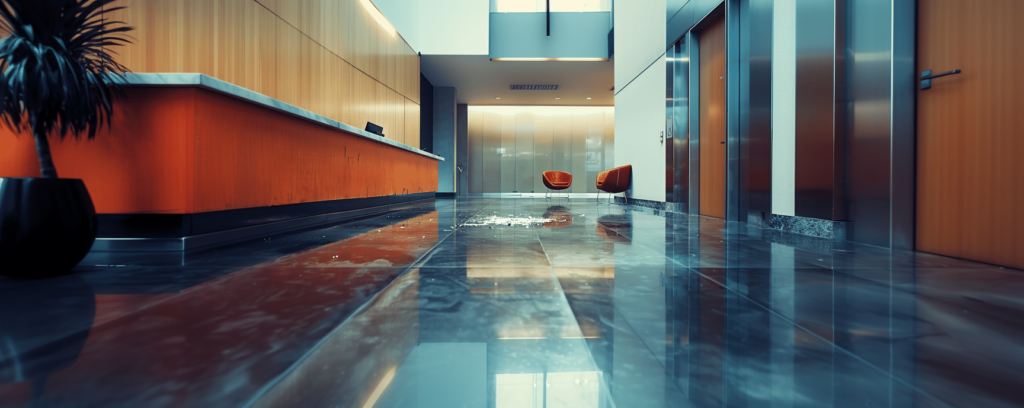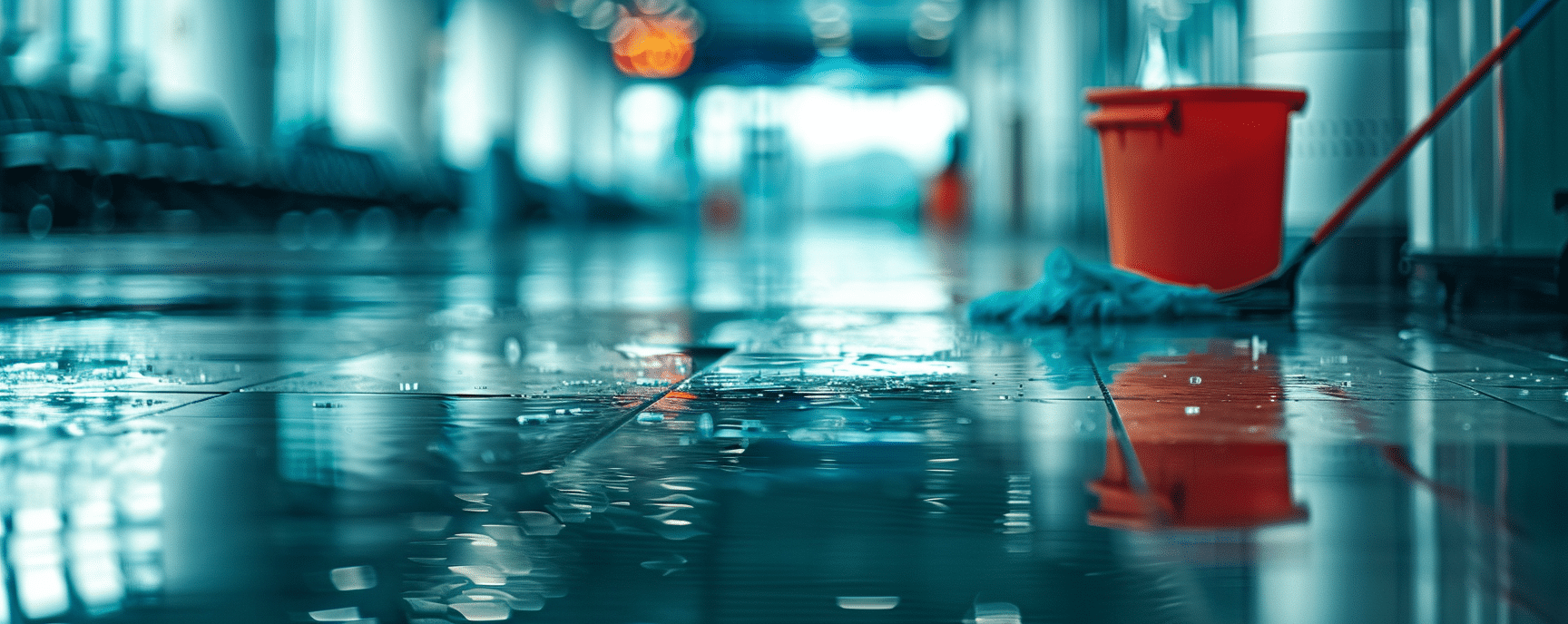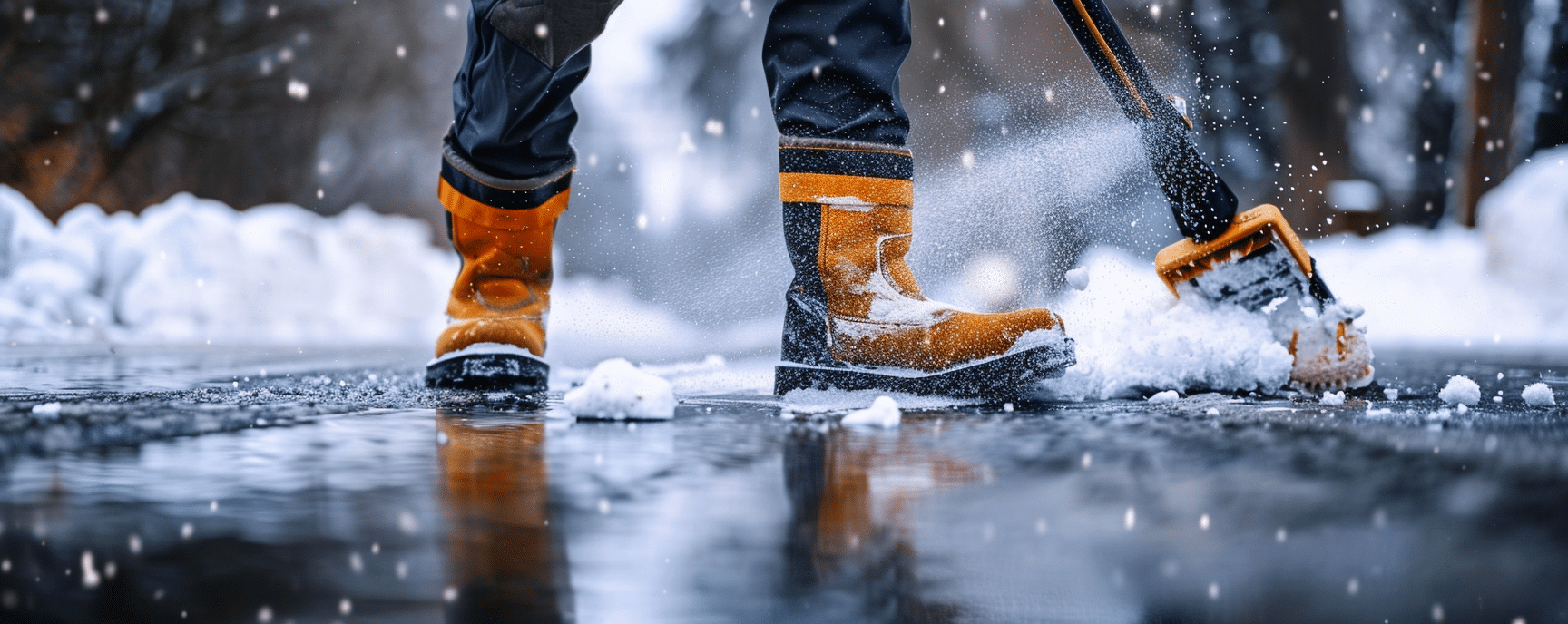Preventing Slips, Trips and Falls in the Workplace
Last updated Wednesday, September 18th, 2024

Preventing slips, trips, and falls in the workplace starts with understanding the causes and taking preventative action. This guide will provide straightforward strategies to help you identify hazards and apply effective prevention methods. Get ready to learn about maintaining safe conditions, selecting appropriate footwear, and the importance of employee training—a practical roadmap to a safer workplace.
Key Takeaways
- Slips, trips, and falls are significant workplace hazards caused by reduced traction, obstacles, and uneven surfaces, and can result in severe health outcomes and productivity loss.
- Conducting a thorough workplace hazard assessment and prioritizing risks through regular evaluations and employee participation is essential to prevent these workplace incidents.
- Implementing prevention strategies such as maintaining safe walking surfaces, promoting proper footwear, and using fall protection systems, alongside employee training and awareness, is crucial for creating a safer work environment.
Understanding Slips, Trips, and Falls
Slips, trips, and falls are not just clumsy accidents; they’re a significant workplace hazard. Slips usually occur when there’s a loss of traction between the shoe and the walking surface, often due to wet or contaminated surfaces. Trips happen when a person’s foot contacts an object, causing them to lose balance. Falls may be the result of slips or trips, or they may occur from a sudden loss of balance or height. Common triggers include inadequate lighting, obstructive cables, inappropriate floor coverings, and contaminated surfaces such as those with liquid or grease spills.
We can gain a better understanding of these incidents by examining how they occur.
Causes of Slips
Slips often spring from a reduced traction between your footwear and the walking surface. Wet or contaminated surfaces, or those polished or finished to have low traction, are common culprits. Imagine walking on a freshly mopped floor or one covered in loose, dusty materials. The chances of slipping are high, right?
Never underestimate the role of proper footwear. Shoes offering inadequate grip can heighten the likelihood of slipping, particularly when coupled with dangerous surface conditions. Thus, see your footwear as a crucial part of your defense against slips.
Causes of Trips
Trips, on the other hand, are frequently caused by obstacles. Tools or materials left in walkways can pose significant hazards, particularly if they blend into the environment or are unexpected. Ever stumbled over an open drawer or a cable stretched across your path? These are typical tripping hazards.
Uneven surfaces such as potholes, broken pavements, and loose flooring like rugs or temporary coverings are also common causes of trips. Poor lighting conditions can exacerbate these risks by making potential hazards harder to see. Therefore, as you move around your workplace, always stay alert to these potential causes of trips.
Consequences of Falls
Falls can have serious consequences, impacting not only individual health but also overall workplace productivity. They can result in severe health outcomes such as fractures or dislocations, requiring extensive medical treatment and time away from work. Slips, trips, and falls are some of the top causes of fatal and non-fatal workplace injuries, which is not surprising. This highlights the importance of workplace safety measures to prevent these accidents.
Interestingly, 67% of all falls in the workplace occur on the same level, indicating a high prevalence of workplace accidents in common work settings. This reinforces the need for proactive measures to avert such incidents.
Workplace Hazard Assessment
Conducting a thorough hazard assessment is a crucial step in preventing slips, trips, and falls in the workplace. From inspecting all walking surfaces within and surrounding a facility to involving employees from various areas in the risk assessment process, every detail counts in ensuring a safer workplace. Employers should be aware that they’re legally required by OSHA regulations to provide a safe work environment, which includes preventing slips, trips, and falls.
We need to examine the finer details of hazard identification and risk assessment.
Identifying Hazards
Identifying hazards is a critical step in preventing slips, trips, and falls. Uneven working surfaces, unsafe ladder positions, and other common hazards are among the causes contributing to these incidents. Apprehending potential hazards in the workplace, like these, is vital for safeguarding against accidents.
However, spotting hazards is not solely the responsibility of the management. Employees also play a significant role in this process. After all, who better to spot potential risks than those who navigate the workplace daily? Hence, employee participation in the hazard identification process is essential.
Risk Assessment
Risk assessment, another key component of workplace safety, helps prioritize potential hazards. Initial audits for slips, trips, and falls evaluate the likelihood and impact of incidents, helping to focus efforts on the most significant risks. A comprehensive job hazard analysis is key to assessing these risks and designing safety programs to mitigate slips, trips, and falls.
Risk assessments facilitate the detection of eliminated hazards and those needing continuous management. Routine risk evaluations with checklists contribute significantly to the creation of effective training programs for preventing slips, trips, and falls. This approach enables us to pinpoint hazards and devise strategies to counter them.
Effective Prevention Strategies
With an understanding of the causes and consequences of slips, trips, and falls and the importance of hazard assessment, it’s now time to explore effective prevention strategies. These strategies range from maintaining safe walking surfaces and promoting proper footwear to implementing fall protection systems. Each of these elements plays a crucial role in creating a safer work environment.
Maintaining Safe Walking Surfaces
A key prevention strategy involves maintaining safe walking surfaces to prevent falls. Good housekeeping practices such as keeping floors clean, dry, and free from obstruction are essential to prevent most slips, trips, and falls. By following these safety tips, you can ensure a safer environment for everyone.
In addition to keeping areas clean, regular maintenance like recoating or replacing floors, and the installation of non-slip mats or permanent coatings can significantly decrease the risk of falling. During bad weather, employers should clear high-traffic areas of clutter and install slip-resistant floor mats in areas prone to wetness. Tools like the Slips Assessment Tool (SAT) can evaluate the slip resistance of walkway surfaces and inform necessary improvements.
Promoting Proper Footwear
Proper footwear plays a crucial role in preventing slips and falls. Believe it or not, it can reduce injury claims by a whopping 67% in environments with slippery work surfaces. The suitability of footwear can vary based on the workplace environment. Conditions such as oily floors or outdoor icy conditions require specialized features like soles with tunnels to channel away water and circular grips to prevent hydroplaning.
Maintaining safety footwear in good condition through regular inspection and replacement when the tread is worn out are necessary steps to prevent slips, trips, and falls. For office employees who may occasionally enter areas with slip risks, implementing the use of slip-resistant shoe covers at entry points can serve as an effective preventive measure.
Implementing Fall Protection Systems
When it comes to preventing falls from heights, fall protection systems are a must-have. Safety harnesses, part of the personal fall arrest systems, protect workers from falls by distributing the force of a fall across the body. Safety nets are used to arrest falls from heights and reduce the risk of serious injuries.
These systems, however, need to be correctly installed and properly used for effective fall prevention. Regular inspection and maintenance ensure they function properly and are safe to use. Remember, a safety harness is only as good as its overhead anchor point, and a safety net needs to be placed as close as possible under the working area to reduce fall consequences. It’s essential to invest in high-quality safety equipment to ensure the best protection.
Employee Training and Awareness
While having the right equipment and strategies in place is important, they’re only as effective as the people who use them. Employee training and awareness play a key role in fostering a safety-conscious culture. From safety training covering best practices to avoid risks to ongoing training guiding the environments and hazards workers may encounter, every aspect counts.
We should further examine the development of safety programs and the encouragement of hazard reporting.
Developing Safety Programs
Safety programs form the backbone of a safer workplace. Such programs are essential for reducing the risks of slips, trips, and falls. Implementing effective safety practices should include specific measures for dealing with seasonal hazards to effectively minimize slip, trip, and fall incidents.
Training within safety programs should guide employees on how to report potential slip, trip, and fall risks effectively, including details on procedures and reporting channels. Ultimately, the success of a safety program depends on its effective implementation.
Encouraging Reporting of Hazards
Encouraging employees to report hazards is fundamental to strengthening workplace safety. It can significantly reduce the incidence of slips, trips, and falls. When hazards are reported, taking prompt action ensures that these risks are managed efficiently and reflects a company’s commitment to safety.
Employee involvement goes beyond just reporting. Engaging employees in discussions during risk assessments lead to better identification and mitigation of potential slip, trip, and fall hazards. It requires a joint effort to ensure a safer workplace.
Adapting to Seasonal Challenges
As the seasons change, so do the challenges we face in ensuring workplace safety. Whether it’s a wet autumn, a snowy winter, or the flu season, each period brings unique risks that demand our attention.
We need to investigate how we can equip ourselves for these seasonal challenges and sustain workplace safety throughout the year.
Preparing for Winter Weather
Winter, with its snow and ice brought by cold temperatures, poses unique challenges to workplace safety. Prompt removal of snow and ice from walking surfaces is crucial to prevent slips and falls. Using ice melt products can help to quickly reduce slippery conditions on outdoor surfaces.
Employees should wear insulated, water-resistant boots with good rubber treads to provide better traction on slippery surfaces. Companies should have a policy concerning the requirement for proper footwear during the winter months. Training employees on safe walking techniques, such as taking slow, short steps and walking flat-footed, can increase stability on ice. Also, don’t forget to place moisture-absorbent mats and ‘Wet Floor’ signs at entrances to collect water and snow brought inside by footwear.
Navigating Autumn Hazards
Autumn, while beautiful, brings its own set of challenges. Fallen leaves can create slip hazards when they cover walkways and pedestrian areas. Regular and consistent cleaning efforts are key to ensuring that walkways remain clear and safe during the autumn season.
Remember, maintaining safety during autumn goes beyond just leaf removal. It’s essential to assess outdoor areas, taking into account varying weather conditions that could introduce additional hazards. Autumn introduces distinct difficulties in preserving workplace safety, including conditions that escalate the danger of slips, trips, and falls.
Frequently Asked Questions
What are the causes of slips in the workplace?
Slips in the workplace are often caused by reduced traction between footwear and the walking surface, which can happen on wet or polished surfaces, or when wearing improper footwear. These factors increase the likelihood of slipping.
How can we prevent slips, trips, and falls in the workplace?
To prevent slips, trips, and falls in the workplace, it’s important to maintain safe walking surfaces, promote proper footwear, and implement fall protection systems. Regular hazard assessments and employee training are crucial.
What role does footwear play in preventing slips, trips, and falls?
Proper footwear is crucial in preventing slips and falls. It is important to use the right footwear for specific workplace environments, keep safety footwear in good condition, and replace it when the tread is worn out.
How can we adapt to seasonal challenges in preventing slips, trips, and falls?
To adapt to seasonal challenges in preventing slips, trips, and falls, it is important to implement specific safety measures, such as prompt snow and ice removal in winter and keeping pedestrian areas clear of fallen leaves in autumn. These actions can help reduce the risk of accidents.
What is the importance of employee training and hazard reporting in preventing slips, trips, and falls?
Employee training and hazard reporting are crucial in preventing slips, trips, and falls. They help to foster a safety-conscious culture and reduce accidents by guiding employees on best practices to avoid risks and report potential hazards effectively.












